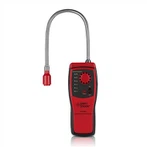Low frequency measurements require the selection of a suitable multimeter
Most modern multimeters can measure AC signals with frequencies as low as 20Hz. But some applications require measuring signals at lower frequencies. To conduct such measurements, you need to choose a suitable multimeter and configure it appropriately. Please see the following examples:
1. Setting the correct AC filter is very important. Filters are used to smooth the output of true RMS converters. The correct setting is LOW when the frequency is below 20Hz. When setting the LOW filter, ensure the stability of the multimeter by inserting delays of 2 and 5 seconds. Use the following command to set the low filter.
2. If you know the level of the measured signal, you should set a manual range to help speed up the measurement. The longer stabilization time of each low-frequency measurement will significantly slow down the automatic range.
3. 34401A uses a DC blocking capacitor to block the ACRMS converter for measuring DC signals. This allows the multimeter to measure AC components within its range. When measuring sources with high output impedance, sufficient time is required to ensure the stability of the DC blocking capacitor. The stabilization time is not affected by the frequency of the AC signal, but is affected by any changes in the DC signal.
The Agilent 3458A has three methods for measuring ACRMS voltage; Its synchronous sampling mode can measure signals as low as 1Hz. To configure the multimeter for low-frequency measurement:
1. Select synchronous sampling mode:
SETACV:SYNC
2. When using synchronous sampling mode, for ACV and ACDCV functions, the input signal is DC coupled. During the ACV function, use mathematical methods to subtract the DC component from the reading. This is an important consideration as the combined AC and DC voltage levels may cause overload conditions, even if the AC voltage itself is not overloaded.
3. Choosing the appropriate range can speed up the measurement, as the automatic range characteristic can cause delays when measuring low-frequency signals.
4. To sample waveforms, a multimeter needs to determine the signal period. Use the ACBAND command to determine the pause value. If you do not use the ACBAND command, the multimeter may pause before the waveform repeats.
5. The synchronous sampling mode triggers the synchronization signal with a voltage level. However, noise on the input signal may cause false level triggering and result in inaccurate readings. It is important to choose a level that can provide a reliable trigger source. For example, to avoid the peak of a sine wave, as the signal changes slowly and noise can easily cause false triggering.
6. To obtain readings, ensure that the environment around you is electrically 'quiet' and use shielded test wires. Enable level filtering and LFILTERON to reduce sensitivity to noise.






